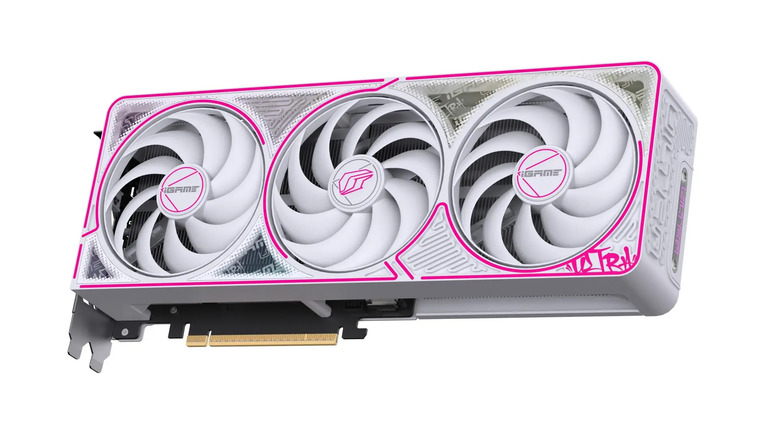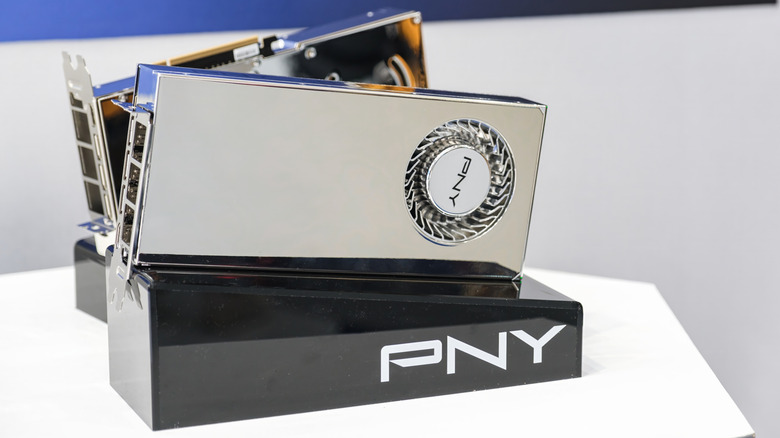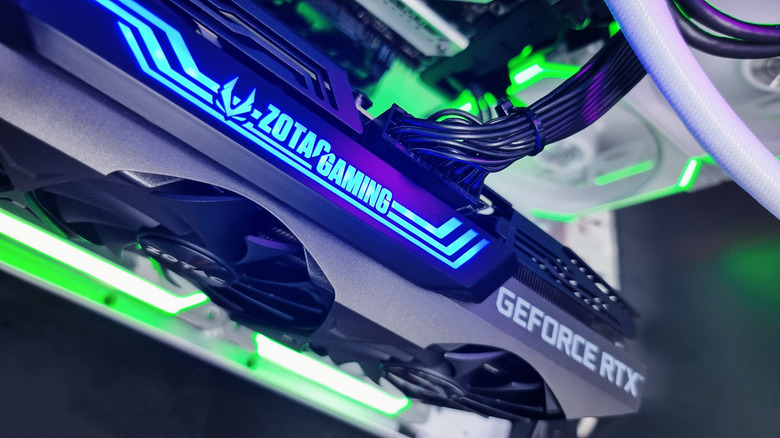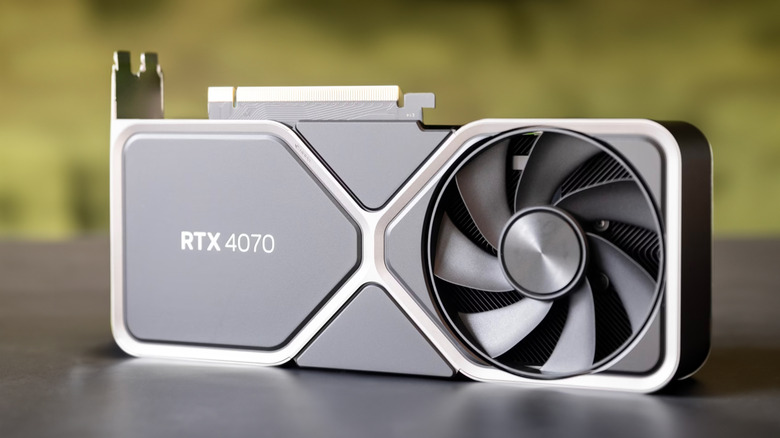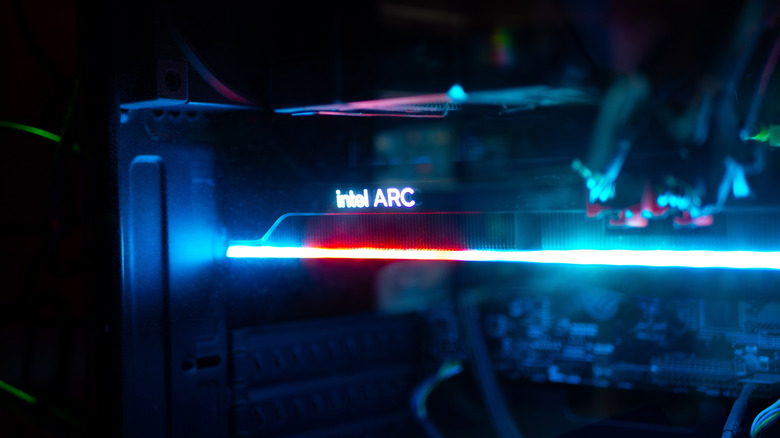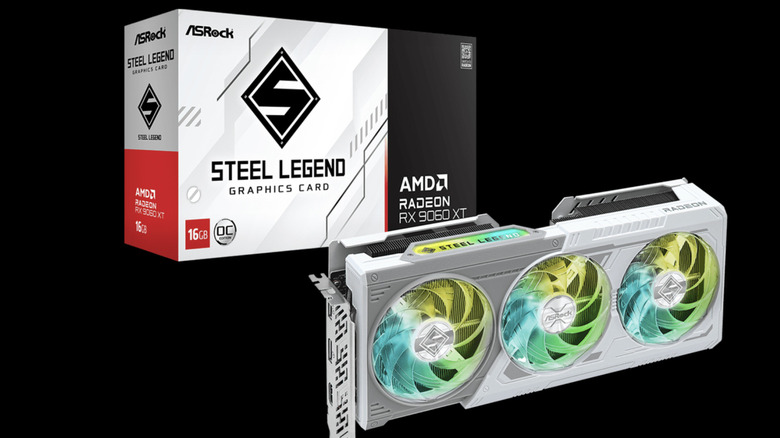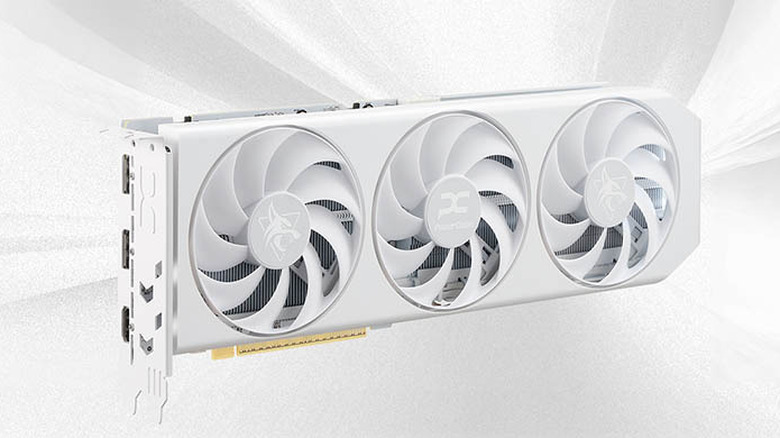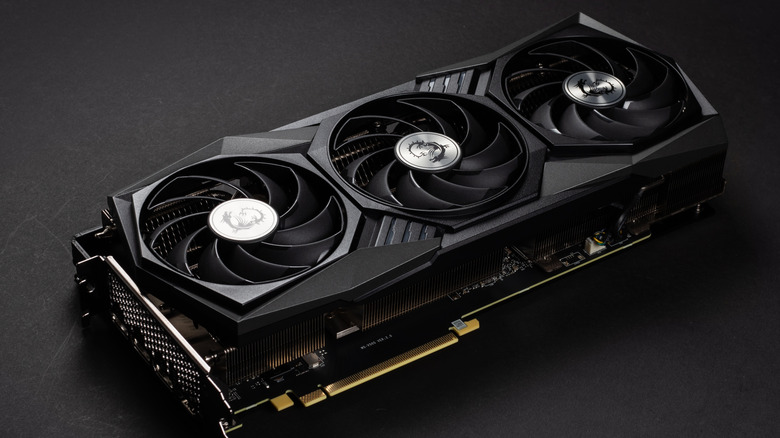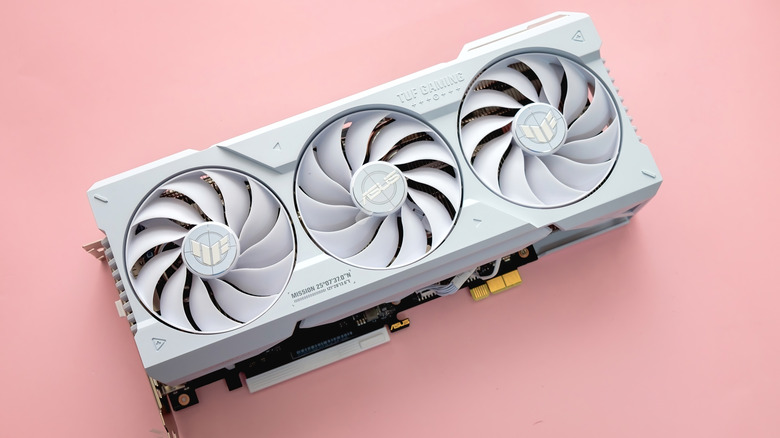Ranking 11 Major Graphics Card Brands From Worst To Best
We may receive a commission on purchases made from links.
Despite the end of the great chip shortage, building a new PC is still a tricky business in 2025. Gone are the days when a decent gaming rig could be built for under $1,000. Today, you can spend that whole budget on just getting a brand new graphics card. Unfortunately, since GPUs are one of the most important components of a PC, on which all gaming performance depends, and we're in an era of some of the worst-value cards, picking one has become a headache.
Nvidia designs and manufactures core GPU chips for its partners, but each maker gets to design their own cooling and thermal management systems. These factors, coupled with software support and reliability, can change the appeal of a card a lot. So, the first step is to choose a brand. Different brands excel in different metrics. For example, people associate Asus with all-out performance, while Sapphire is known mostly for its reliability. Depending on what you'll be using the graphics card for, it can direct you to a specific manufacturer. To help you make this decision, we've reviewed user feedback and the service records of all major GPU manufacturers, ranking them from worst to best based on a combination of customer service, performance, reliability, and pricing criteria.
11. Colorful
If you live in the Western hemisphere, then there's a good chance you may not have heard about the brand Colorful. The company has been around since 1995 and is a major manufacturer of PC components, including GPUs, SSDs, motherboards, and RAM, in the Chinese and other South Asian markets. When it comes to GPUs, specifically, Colorful uses both Nvidia and AMD tech, and its aesthetic is a bit different. Its GPUs feature extravagant designs with intricate work that looks mesmerizing. If you like white GPUs, then Colorful is the best, and they've even launched special edition cards.
The good news continues in the performance department, where reviews of its top-tier iGame 5080 graphics card have been positive. Experts have highlighted the excellent performance of the GPU while maintaining temperatures and even allowing for some overclocking headroom. Prices are pretty decent, hovering near or just slightly above Nvidia's MSRP for most cards.
However, there's a big catch. While the brand does sell outside Asia, primarily through Newegg, finding them is a big challenge. Then there's the support infrastructure, which is basically non-existent outside Asian markets. So, if you end up with a bad card in the U.S. and want a return merchandise authorization (RMA), sending it back to China could be a nightmare.
10. PNY
PNY is a relatively popular brand in Western markets that has been around since the 1980s. The company carries only Nvidia GPUs, so your options are a bit limited, but the variations are plenty. Its offerings are neatly divided into two different lineups, namely Verto and XLR8 Gaming Verto Epic X RGB. Cards from the Verto series are priced near Nvidia's MSRP and feature a clean, minimal RGB aesthetic, making them a decent option for budget builds. On the other end of the spectrum, the XLR8 Gaming Verto series carries a lot of flair in the design department and more thermal headroom.
When it comes to software, the company's Velocity app is simple to use and enables users to customize every metric, as well as perform automatic overclocking. Beyond that, buyers who've spent their money on the latest 50-series cards from PNY have reported excellent performance, with the GPU maintaining steady temperatures and remaining quiet. Unfortunately, it's not all sunshine and rainbows. If it were, the PNY would have been higher on the list. Its service record has left many disappointed, with Reddit full of people frustrated with the company's return policy. Some even claimed PNY representatives denied replacements for faulty cards and blamed them instead.
9. Zotac
Zotac is one of those GPU brands that has divided the PC world. Some believe Zotac offers the best value for money cards, while others criticize reliability and failure rates. The truth, however, is somewhere in between. The brand has been around since 2006 and has produced some great value GPUs, such as those in the discontinued GTX lineup, which often cost less than competing ASUS or MSI counterparts and actually offer comparable performance. Their higher-end models are what's got many worried. For example, Zotac's 30-series cards had overheating issues and left a lot of performance on the table. They also weren't the best in terms of build quality, with several facing fan problems.
Fortunately, the launch of Zotac's 50-series cards has been a bit better. The performance and cooling are decent, but according to multiple accounts from real users, the failure rates are still not low. Some have reported receiving no signal to their monitors, while others have had to return multiple GPUs due to failures. Customer support is also subpar, with representatives often denying claims. One unfortunate buyer recently had their RMA card dropped by someone at Zotac, and now they're denying the request. Of course, these instances are rare, but it's always a good idea to be aware of them before making a purchase.
8. Nvidia
Nvidia's Founder Edition (FE) cards are unique in the sense that they represent Nvidia's vision of what a graphics card should be in terms of specifications, clock speeds, and thermal headroom. This, coupled with the unique minimalist aesthetic, makes FE cards quite popular amongst non-RGB-loving users. Beyond that, such cards are usually the only ones available at MSRP, making them a bargain, too. Unfortunately, all this does come at a cost, and that's usually performance. FE cards lack chunkier heatsinks and usually include only two fans, which, in the days when newer-gen models can draw more than 300W from the wall, is just not enough. They can run anywhere from 5 to 10 degrees Celsius hotter compared to similar offerings.
Since there isn't much thermal headroom, overclocking isn't possible either. Then there's repairability. While Nvidia has decent support infrastructure, its cards have had some issues. For example, the RTX 5090 FE board is built in two sections, where the main card and the PCIe connector assembly are joined by a flimsy FPC connector that can break at any time. The worst part? The connector cannot be replaced.
7. Intel
When it comes to GPUs, there have only been two choices for the common man. Either go Team Red with AMD or Team Green with Nvidia. Both companies have essentially formed a duopoly in the GPU space, enabling them to charge thousands of dollars for a new GPU. Recently, though, there has been a disturbance in the force, and that's Intel. The company's Arc lineup of GPUs differentiates itself from the big two in the sense that Intel actually makes GPUs that are affordable. And the best part? They are available at MSRP, so you don't have to deal with scalpers at all.
While Intel's first A-series GPUs were plagued with performance issues and shoddy driver support, its new B-series is a marked step up. Particularly, the Intel Arc B580, which costs just $250 on Amazon, is a monster at 1080p and 1440p gaming, delivering excellent and consistent performance across a range of titles. Intel also has its own version of Nvidia's DLSS, named XeSS, that upscales game resolution with AI and delivers better frame rates. There are a few downsides, though, and one of them is ray tracing performance. Like AMD, Intel GPUs also struggle with rendering ray-traced graphics natively. Plus, some users have faced problems when running older games. Despite this, Intel GPUs represent excellent value for almost anyone, and their repair infrastructure is also robust.
6. Gigabyte
When it comes to GPUs, most people have brands they are comfortable with. It's usually someone they bought from a long time ago, and it stuck with them, making a lasting positive impression. Gigabyte, for some people, is one of those brands, and it's actually good. The brand carries both Nvidia and AMD cards, so you have plenty of variants to choose from. In its current lineup, Gigabyte has differentiated its cards into five tiers: WindForce, Eagle, Gaming, Aero, and AORUS, with each offering slightly better performance than the previous one. The good news continues in the pricing department, as Gigabyte's cards, even for the higher-end models, are often closer to the MSRP compared to those of other major manufacturers. Beyond that, real-world user reviews of its new 50-series graphics cards are pretty positive, thanks to them providing solid and reliable performance, as well as good thermal efficiency.
However, Gigabyte's history isn't clean. Some of its GPUs have been notorious for defect rates, and the company's support regularly denies RMA requests from consumers under warranty. Some have had the dead GPU they once returned sent back to them. Still, if you want really good performance and can navigate mixed customer support if any issues arise, then Gigabyte GPUs are a solid option.
5. ASRock
For many people, ASRock is one of the great motherboard makers, but its AMD GPUs are no slouches either. The company's cards can be divided into seven tiers, with Aqua and OC Formula at the top, while the Steel Legend and Phantom Gaming series cater more to mid-range gamers. Reviews of its latest GPUs, like the RX 9070 XT, which costs $750 on Amazon, have been nothing but fantastic in terms of reliability and stable performance at a decent price.
In addition, the brand has recently started carrying Intel Arc GPUs, and they are some of the best. Experts who tested ASRock's Arc B580 GPU highlighted its fantastic cooling, which, in turn, unlocks extra performance while also being super quiet. All ASRock GPUs come with a standard one-year warranty, but the support experience, like others on this list, has been a mixed bag. The company has left customers unhappy due to a lack of communication, and some allege having their return requests delayed for months after receiving a faulty product. Still, if you're in the market for an Intel GPU, it's hard to ignore ASRock.
4. PowerColor
PowerColor is an AMD partner, meaning it exclusively carries Team Red GPUs. The company has been around since 1997 and has built user trust by consistently delivering better-performing cards compared to AMD reference models, along with excellent cooling and worthwhile overclocking potential for enthusiasts. The best example is the RX 7800 XT Hellhound, which runs roughly 10-13 degrees Celsius cooler than the reference card while remaining eerily quiet. Experts who overclocked the GPU were also able to gain approximately 12% more performance in games.
The bad news, though, is that throughout Powercolor's history, its service has not been amazing, as evidenced by reports of frustrated consumers with their return experiences. Although they have improved the experience in the United States over the last couple of years, support in other parts of the globe may not be as robust.
3. MSI
Besides Gigabyte, the other major player in the GPU space is MSI. It's another one of those familiar brands that most people have already owned or heard of. The company has both Nvidia and AMD GPUs, which are divided into a hierarchy of eight lines. If you want all-out performance, the Suprim series is the best thanks to its overclocking potential. However, these cards can be quite expensive, typically costing thousands of dollars. Thankfully, MSI also carries value cards in the Gaming series, which are super popular due to a strong balance of performance, cooling, and aesthetics.
Fortunately, MSI's quality control is better than Gigabyte's, resulting in lower failure rates and fewer defective cards. Plus, its Afterburner app is probably the best, as it can help speed up any aging graphics card. Beyond that, reviews for MSI's 50-series cards are generally positive, and we didn't encounter many negative experiences, even with budget offerings like the RTX 5050. However, for the few people who had issues, their return process was less than ideal. Forums are full of stories where someone sent their faulty GPU for return, only to receive another faulty one instead, or have their request repeatedly delayed by support executives.
2. Sapphire
The only reason Sapphire is number two on this list, and not one, is that it only carries AMD cards. But if you're in the market for an AMD GPU and reliability is your top concern, then there's no one better than Sapphire. The company has won the hearts and minds of the people by delivering some of, if not the best, cards. Take the PULSE Radeon RX 9070 XT, for example. It consistently ranks among the top GPUs on the market because it delivers rapid performance at 4K and 1440p resolutions, all while running cool. The best part is that the card is an incredible value at its current price of $669 on Amazon.
The good news continues with the company's budget cards, as they also provide consistently high frame rates in games without breaking the bank. However, if you do end up in some trouble, service should be a pretty straightforward experience. Users who've had to return their cards have reported that they had a pleasant time with the reps, who processed the returns in a week's time. Though your mileage may vary depending on where you live.
1. Asus
For someone whose top priority is the maximum frame rate in games, Asus is probably the best option in the market. The brand has consistently delivered some of the best-performing GPUs, and will continue to do so thanks to the insane levels of cooling some of its cards have. Plus, you are spoiled for choice. That's because Asus has several different versions of the same GPU, catering to both enthusiasts who prioritize performance and value-for-money buyers alike. Just note that pricing for some of its higher-end cards, such as the TUF RTX 5090, can be a bit bewildering, as it costs roughly $1,000 more than Nvidia's MSRP on Best Buy.
Beyond that, Asus's GPUs are reliable, and the company has a big network of service dealers. Unfortunately, Asus hasn't been without controversy. Last year, it allegedly tried to trick YouTuber GamersNexus by attempting to charge money for an RMA request for the ROG Ally, even though it should have been covered under warranty. Another reviewer had his returned card arrive damaged and seemingly mishandled by Asus representatives. Every company endures customer service flaps, and Asus retains the top spot on this list due to the availability and performance of its cards.
Methodology
We curated this list based on a range of different factors. Questions such as performance, cooling, features, software support, and design language played a role in determining how happy buyers were with a specific brand of GPU. For this, we combed through GPU reviews from experts and compared the results. However, a good performing GPU lineup is only half the story. We also carefully researched accounts from people who have dealt with the service of each brand on platforms like Reddit.
At last, GPU choices also played a role, which is why companies like PowerColor, which only carry one brand of GPUs, ranked lower than others. Still, it's also important to mention that none of the GPU companies on the list are bad, not by any means. And once you've decided on the brand, check out the best value cards available today.

